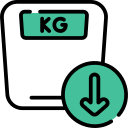Q. What does the retina do in the human eye?
Doctor Answer is medically reviewed by SecondMedic medical review team.
The retina is the light-sensitive layer of tissue located at the back of the eye. It is responsible for converting light rays into electrical signals that are then sent to the brain via the optic nerve, allowing us to see.
The retina contains two types of cells: rods and cones. Rods allow us to see in dim conditions, while cones enable us to distinguish colors and details with greater precision - in fact, our sharpest vision normally occurs within a tiny area known as 'the fovea', which contains only cone cells. The two types of cells work together throughout our visual field, combining their data so we can perceive images accurately.
Light enters through an opening called the pupil in front of the lens and passes through various layers before reaching its destination – with each layer playing its own incredibly important role in providing a clear view! Those layers include: The pigment epithelium (which absorbs stray light particles), photoreceptor nerve fibers (which transmit signals from rods & cones), ganglion cell & bipolar cell axons (which form part of a relay pathway between photoreceptors & other neural pathways) and finally neurons embedded within glial bundles – all working together to create an incredibly complex system enabling sight!
The millions upon millions of sophisticated processes occurring behind our eyes are truly astonishing – it's no wonder that humans have relied on this remarkable organ since time immemorial!
Related Questions
-
Bariatric Weight Reduction Surgery Did you ever regret having ba
-
Bariatric Weight Reduction Surgery Do you know anyone who has ha
-
What is the safest weight loss surgery? | Secondmedic
-
Bariatric Weight Reduction Surgery How can you tell if you are o
-
What does BMI stand for, and how is it calculated? | Secondmedic












